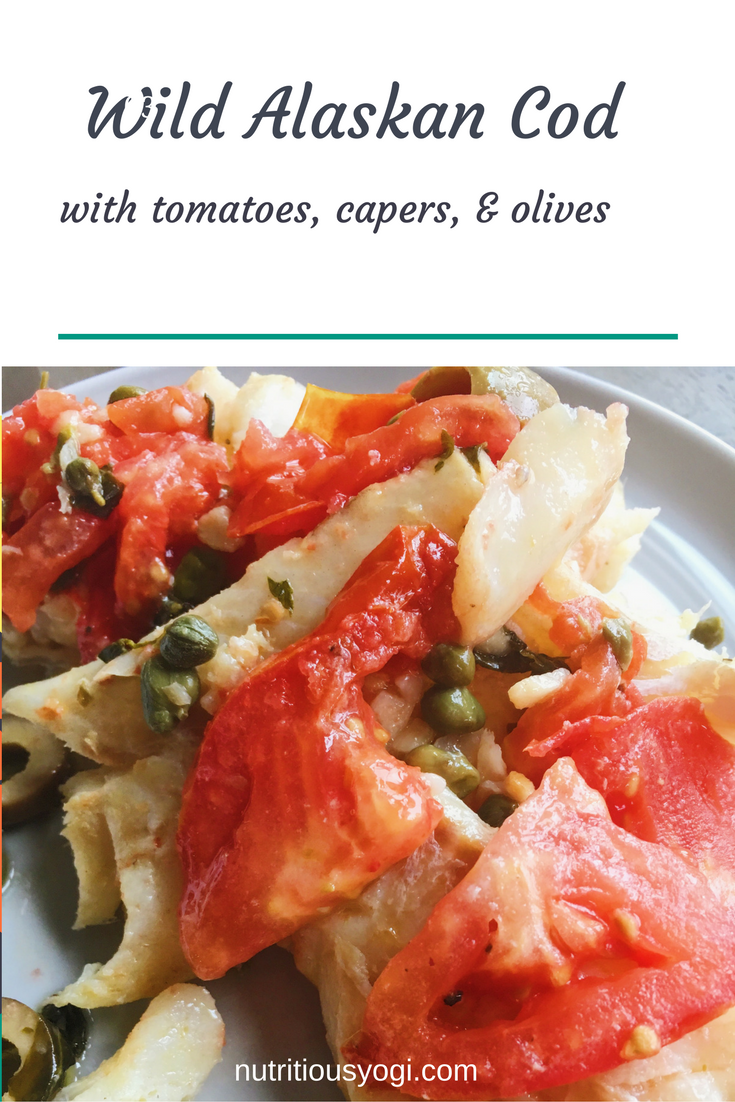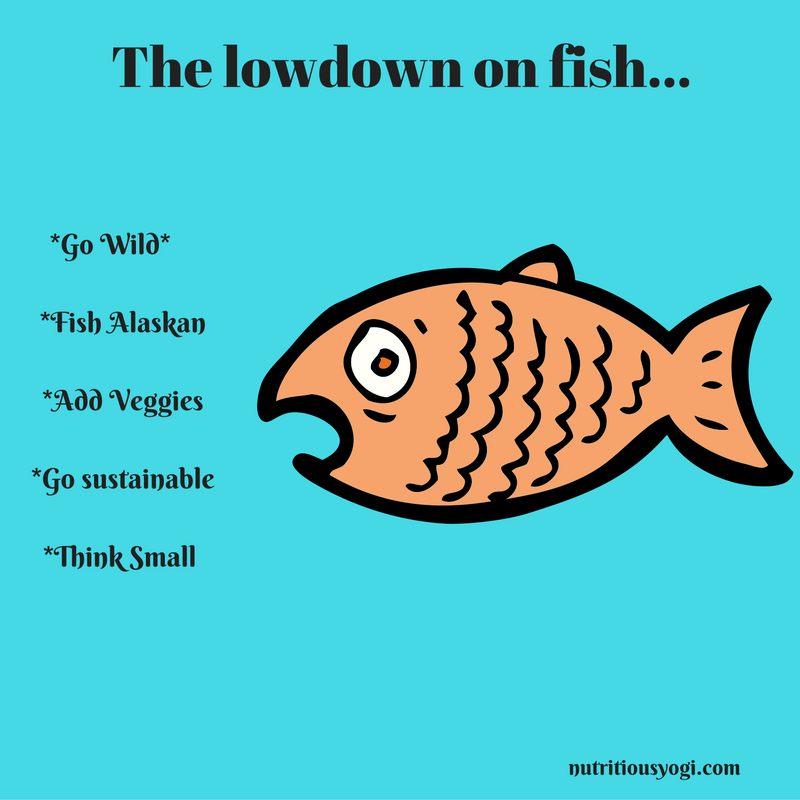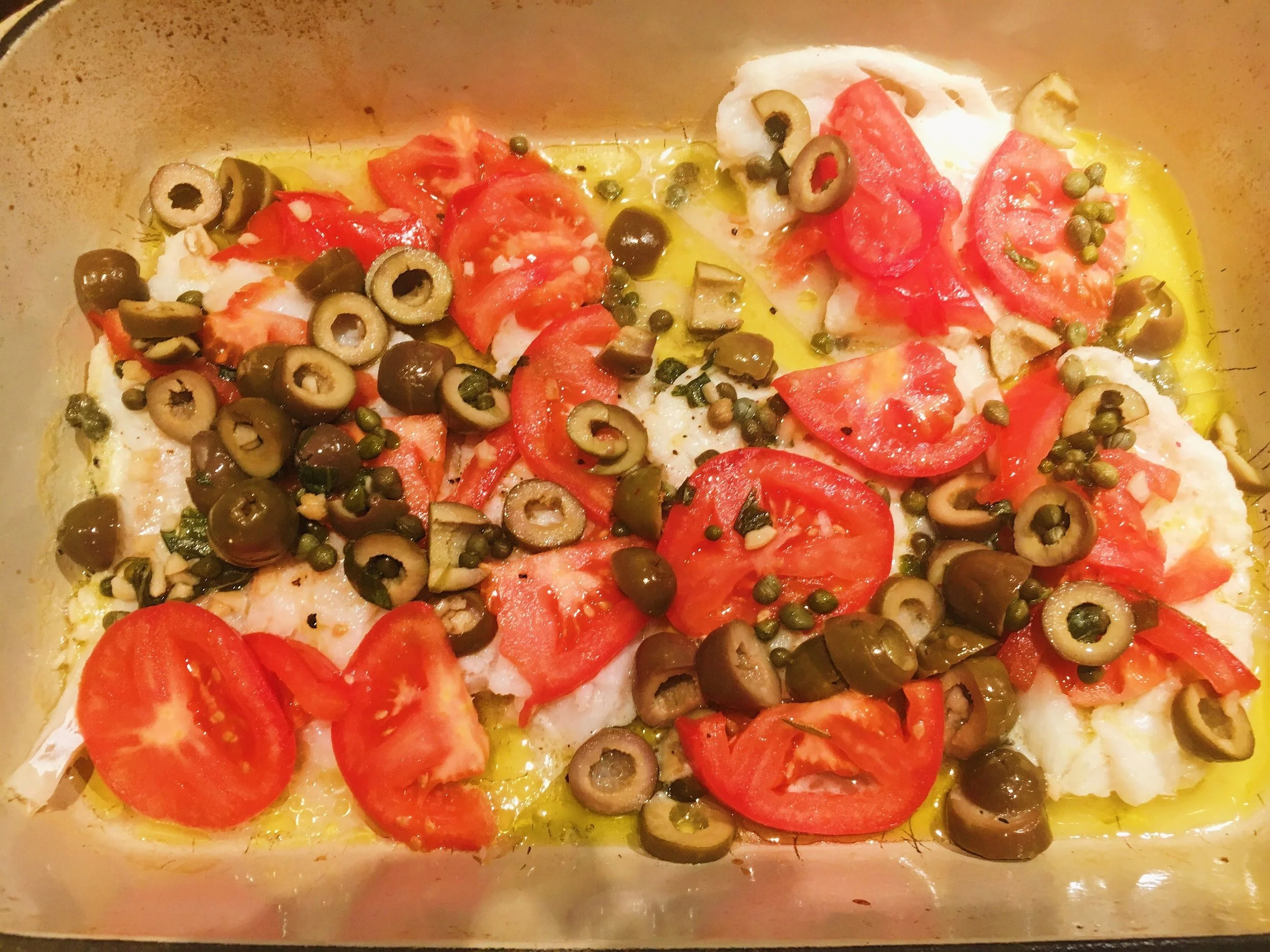Wild Alaskan Cod with Tomatoes, Capers, & Olives
How many times a week do you eat fish? I try for at least once per week but sometimes it’s hard to fit it in when you have a family that’s not so crazy about fish (until they tried this recipe that is). Though I supplement every day for nutrition insurance since fish provide concentrated doses of healthy fats, natural vitamin A, D, and CQ10, it’s still nice to get its protein and flavor in a nice delicious meal. In this post I share with you a tangy and delicious Wild Alaskan Cod with fresh tomatoes, capers, & olives.
This mouth-watering recipe will certainly tickle the taste buds, especially if you like citrus, zest and salty type foods. Any excuse to add capers to something...mmmmm am I right? They add the perfect hint of salt and tang. Same with the olives. Feel free to use any kind of olive you like by the way. I ended up at the Whole foods salad bar and I grabbed some olives with garlic, but you can use black or even kalamata would be amazing.
But hold up…. since this is a nutrition blog, we must get to the bottom of the fish mystery….what’s healthy?….what’s not?... what should we stay away from? It seems everyone you talk to has a different opinion, and it can certainly make your head spin, so I’m here to provide you with some easy tips along with a few great resources so you can feel empowered next time you go fishing at your local market.
Calling all fish in the sea! Are there any that are still healthy for us?
The lowdown on Fish
Fish provide necessary healthy fats, proteins, and vitamins to our diet. It’s best to eat more wild sustainably raised cold-water fish and aim for 3-4 times a month.
When choosing fish, being in MA, I always try to find something at a local fish market.
Because the theme of my entire blog series is about being mindful, we must care about what we eat, and since I’ve added toddlers to the mix, I do even MORE research about where our food comes from. In this day in age, we really don’t have a choice.
Here are the 2 most important things we need to be concerned with.
Mercury
According to Organic Consumer’s, Fetuses, infants, and young children are at greatest risk of harm from mercury, which can damage developing brains and nervous systems.” Methylmercury can cause irreversible damage to the heart and brain.
“Because mercury is stored in our bodies, just as it is in those of fish, women planning to have children should also avoid high-mercury fish well before they become pregnant. According to a recent update by the Centers for Disease Control, 16 percent of American women of child-bearing age have levels of mercury in their blood high enough to indicate increased chance of harm to their fetuses.”
Adults can suffer as well: Symptoms of mercury poisoning include joint pain, fatigue, headaches, and memory loss.
The FDA and EPA have recommended that pregnant or nursing women as well as young children eat no more than two to three meals, (12 oz total) of fish or shellfish per week. Those high in mercury should not be consumed. Ie, swordfish, shark, tilefish, and king mackerel. It’s with regret that I also have to add Atlantic salmon to that list as well. Atlantic salmon is farmed salmon where your better option is Wild from Alaska. More on this below.
Polychlorinated biphenyls or (PCBs)
These are considered neurotoxins as well as hormone disrupters and were found at levels up to seven times higher in farmed salmon than in wild in a this study. PCB’s are considered persistent organic pollutants that accumulate in animal fats. The farmed salmon are raised to eat food they’re not designed to eat like cattle, fish pellets (which can be toxic), along with other genetically modified “food”. This is another reason farmed salmon is really one of the worst to consume.
Grabbed these olives from the Whole Foods salad bar and gave them a quick dice. They gave it a nice garlicky bite. Feel free to choose whatever type of olives you like.
Want to reap the benefits of fish AND keep it healthy? Here are a few pointers:
Go Wild
Wild is generally the best way to go when choosing your fish since farming practices often include genetic modifications (something that’s still not required on food labels), and other harmful practices. Yea it’s really fun when you’re eating “pink” salmon that’s really just pink coloring to make the fish more appealing. Other reasons to choose wild have to do with the overall health of the fish. They swim around and eat what they’re naturally designed to eat, rather than what’s given to them. This means there’s a better concentration of healthy omega 3 fats which is what salmon are known for. PCB’s mentioned above were found at levels up to seven times higher in farmed salmon than in wild, for example.
Go Alaskan
As far as labeling fish goes, do not believe everything you read. In fact many times you see “wild” on a label when it’s really farmed. The good news is, the Alaskan Sockeye Salmon is not able to be farmed, so when you see those words you know it has to be wild. It’s also much brighter in color and a bit leaner than farmed so look for thinner marbling. Wild Alaskan Salmon along with cod, is another fish that’s safe to eat on a regular basis for the reasons mentioned above.
Think Small
Go for fish that are generally lower on the food chain, ie sardines, anchovies, herring since they are less likely to accumulate toxins. They’re super easy to add to pastas, and once you get used to them..enjoy on a cracker! Tommy actually loves sardines as is. You can also mash them up just as you would in a tuna salad.
Go sustainable
We all want what’s best for the environment, and if you’re choosing more sustainable options, chances are they’re the healthier options too.
Here is a cute little fish guide from the Monterey Bay Aquarium where you can just enter in your fish and see what’s what. This way you can’t mess it up. Check it out here. (it also has its very own app, and up-to date recommendations)
And here are some additional tips to navigate the seas from foodandwaterwatch.org.
*Tuna lovers, if you like albacore be sure to look for troll poll & line caught (wildplanet) and limit consumption to no more than once every 1-2 weeks.
Get in those veggies
Natural mercury chelators, (or binding agents) include chorella, and zeolite (green clay) and fermented veggies like kimchi and sauerkraut. These can help naturally escort toxins like mercury out of the body. This might be a good option, if you consume a lot of fish.
So for tonight’s meal, I made a delicious Alaskan Cod since it’s a low toxin, wild-caught, sustainably harvested, mild fish that pairs well with lots of different flavors. In this recipe, the toppings provide so much flavor that a mild fish is the perfect backdrop. You may of course, sub with any mild white fish and it should come out similar, in fact you can ask your local fish market to suggest some different options. It’s always great to try something new!
Wild Cod with tomatoes,capers,&Olives
6 medium Cod fillets (thawed if frozen)
1 large fresh ripe tomato
Juice of 1 lemon
¼ cup olive oil
¼ cup chopped fresh basil
4-6 Tbsp capers
8-10 large green olives, halved or quartered
Freshly ground black pepper
Sea salt
Preheat oven to 450
Begin by patting the fish dry with a clean towel or paper towels. Whenever I forget to do this part, I wonder why the fish came out so soggy. Benefit from my mistakes and consider this part a crucial step. Add the fish to the bottom of a large baking dish and season with salt & pepper.
In a medium bowl combine the olive oil, lemon juice, basil and another dash of salt & pepper.
Slice the tomato in about ½ inch round slices and add a layer on top of the fish, followed by the capers and olives.
Pour the olive oil & lemon juice mixture over the entire dish.
Bake about 8-10 minutes or until fish flakes with a fork.
PS. Hyperlinks from products go to my amazon affiliate page where I make a tiny percentage of what you purchase to continue my benevolent livelihood;) Thanks for reading my blog. xo
References
Science Daily: Farmed Salmon More Toxic Than Wild Salmon, Study Finds : Date:January 9, 2004
Monterey bay seafood watch
foodandwaterwatch.org
https://www.organicconsumers.org/old_articles/Toxic/safe-fish.php good info on mercury and pcbs http://articles.mercola.com/sites/articles/archive/2013/04/15/wild-alaskan-salmon.aspx




